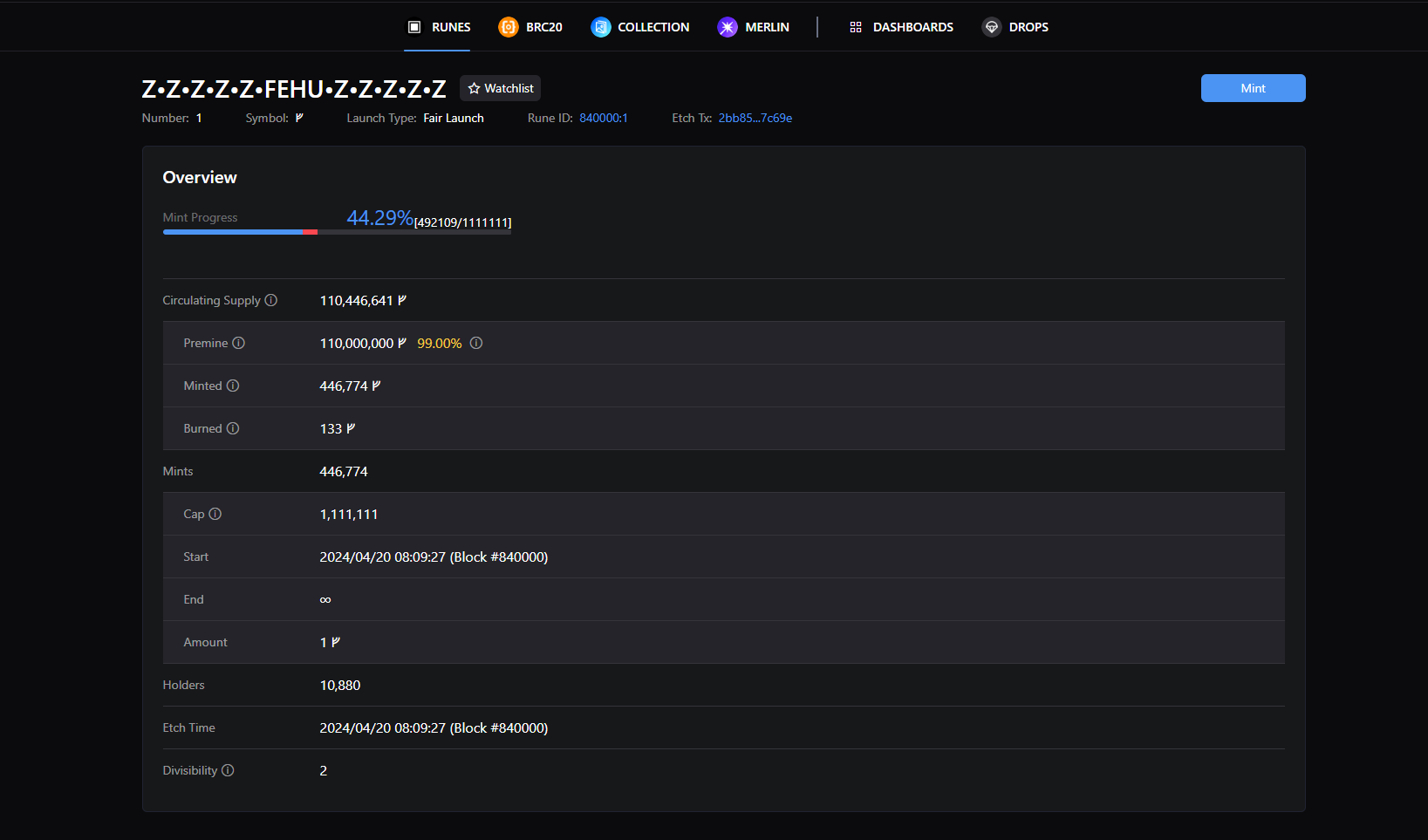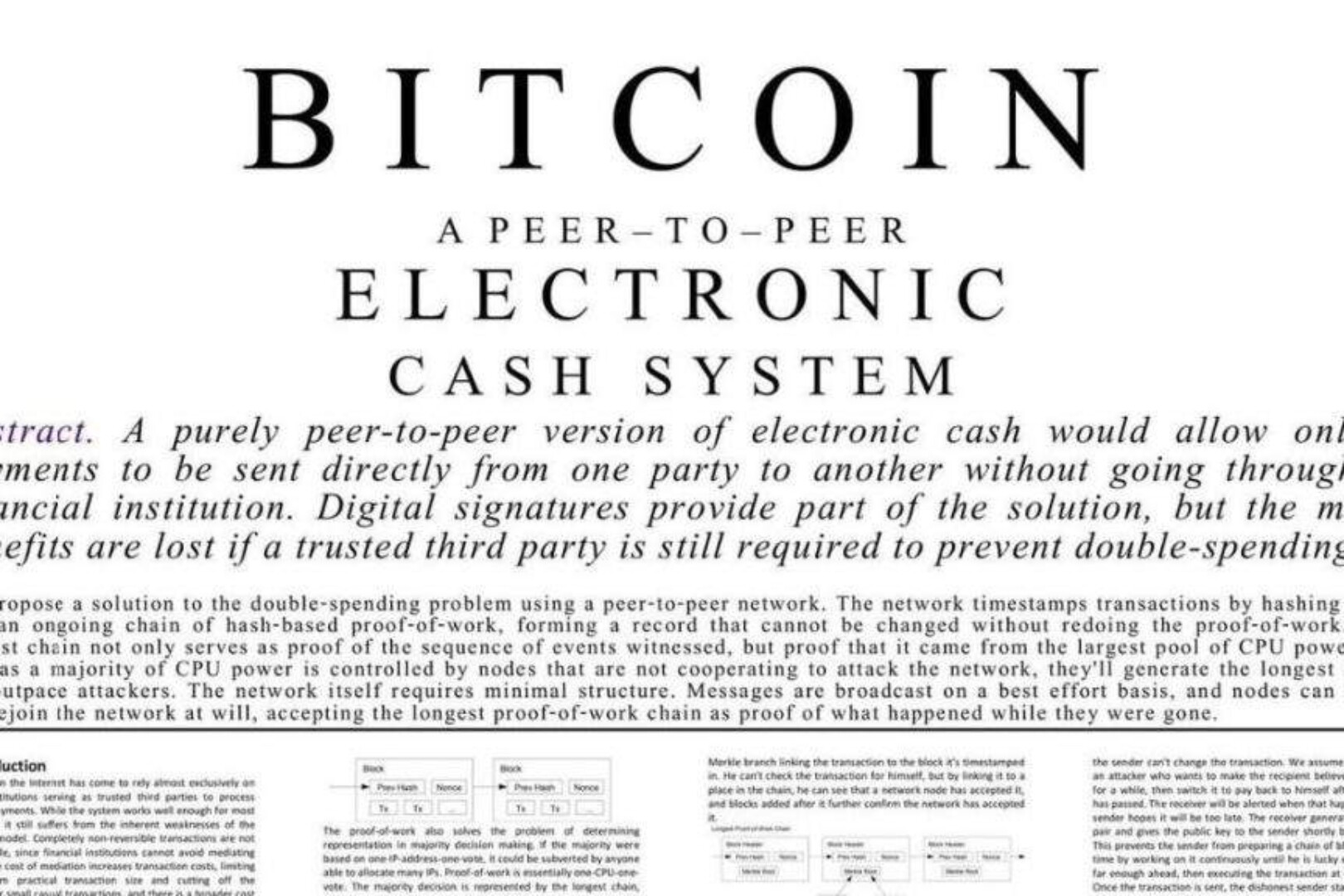Original | Odaily Planet Daily
Author | Asher
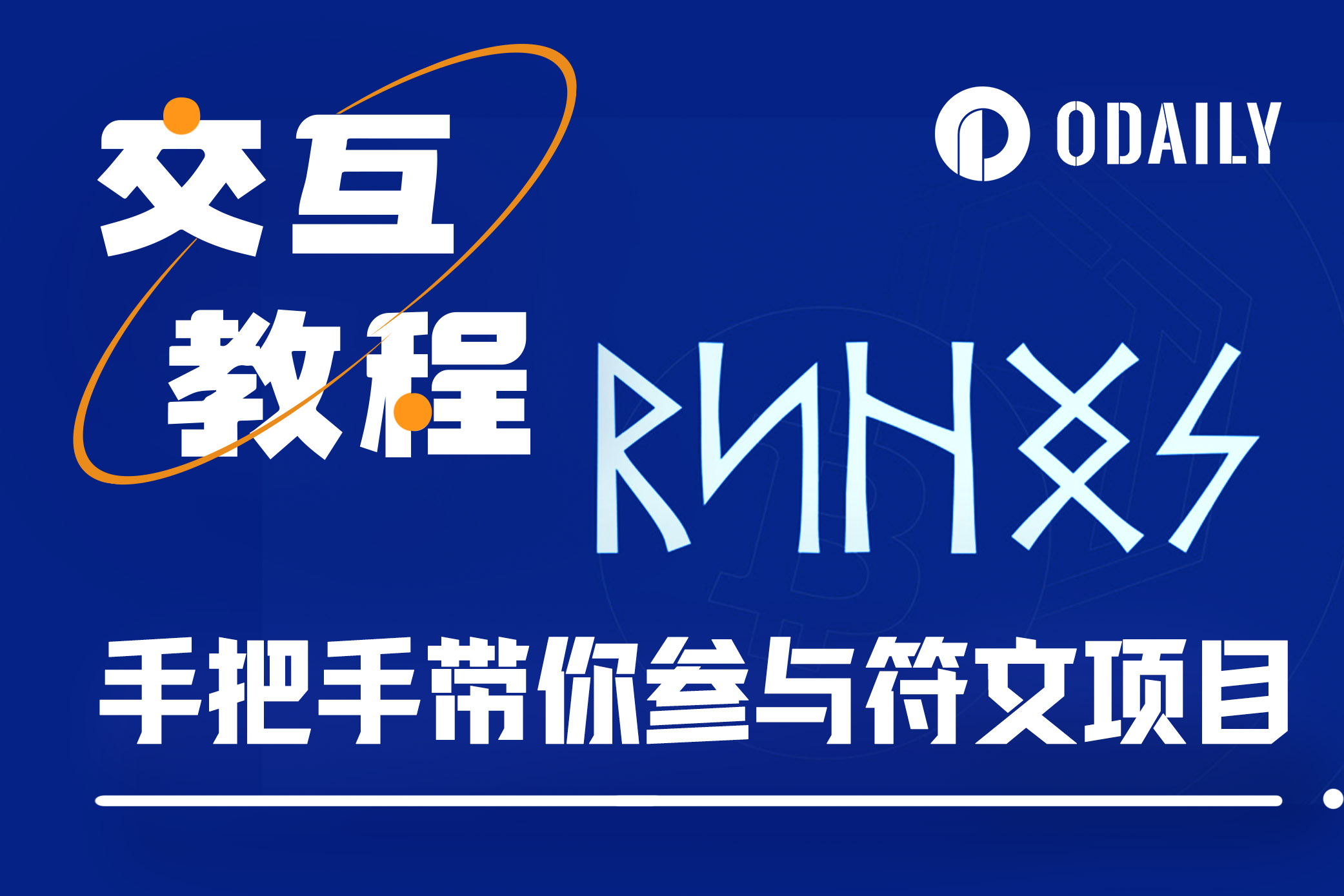
As the BTC mining reward is halved, the popularity of the rune sector remains high. At one point, the BTC network was congested due to the high enthusiasm for participation in the casting, and the gas fee for grabbing runes was thousands of dollars . However, according to community feedback, most novice users are not sure how to participate even if they know what the proxy tools are ( this article lists 10 rune tools ). They can only wait for the project to be listed on centralized exchanges to buy it, making it impossible for them to participate in the first place. In short, "how to participate" is the most concerned topic for novice users at present.
Therefore, Odaily Planet Daily starts with the creation of the mainstream Web3 wallet, and guides everyone to participate in the casting, secondary transactions of rune-related projects, and analyze the popularity of on-chain rune projects.
OKX Wallet
Wallet creation
STEP 1. Download the OKX Wallet plug-in from the Google Play Store ( click here for the download link ).
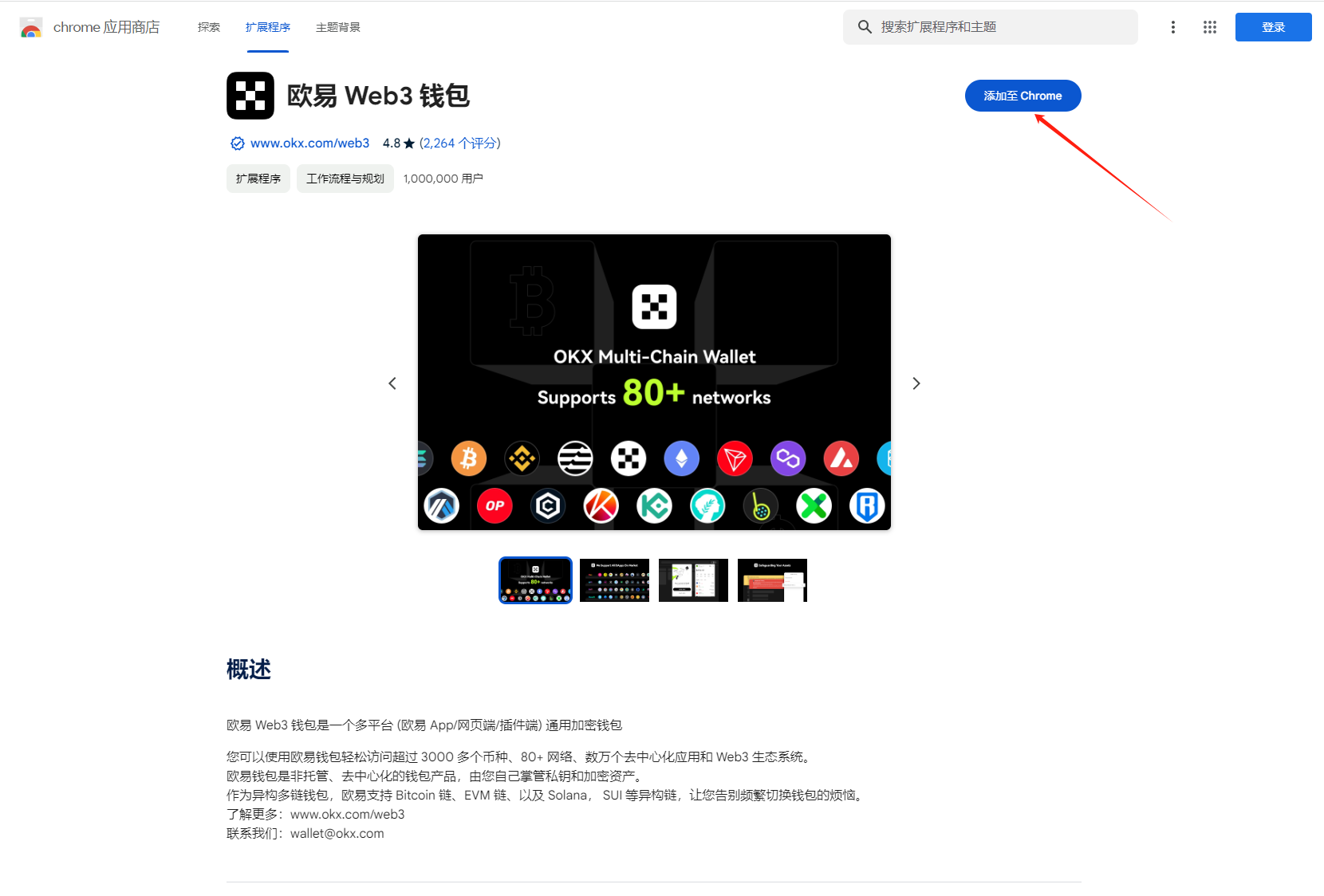
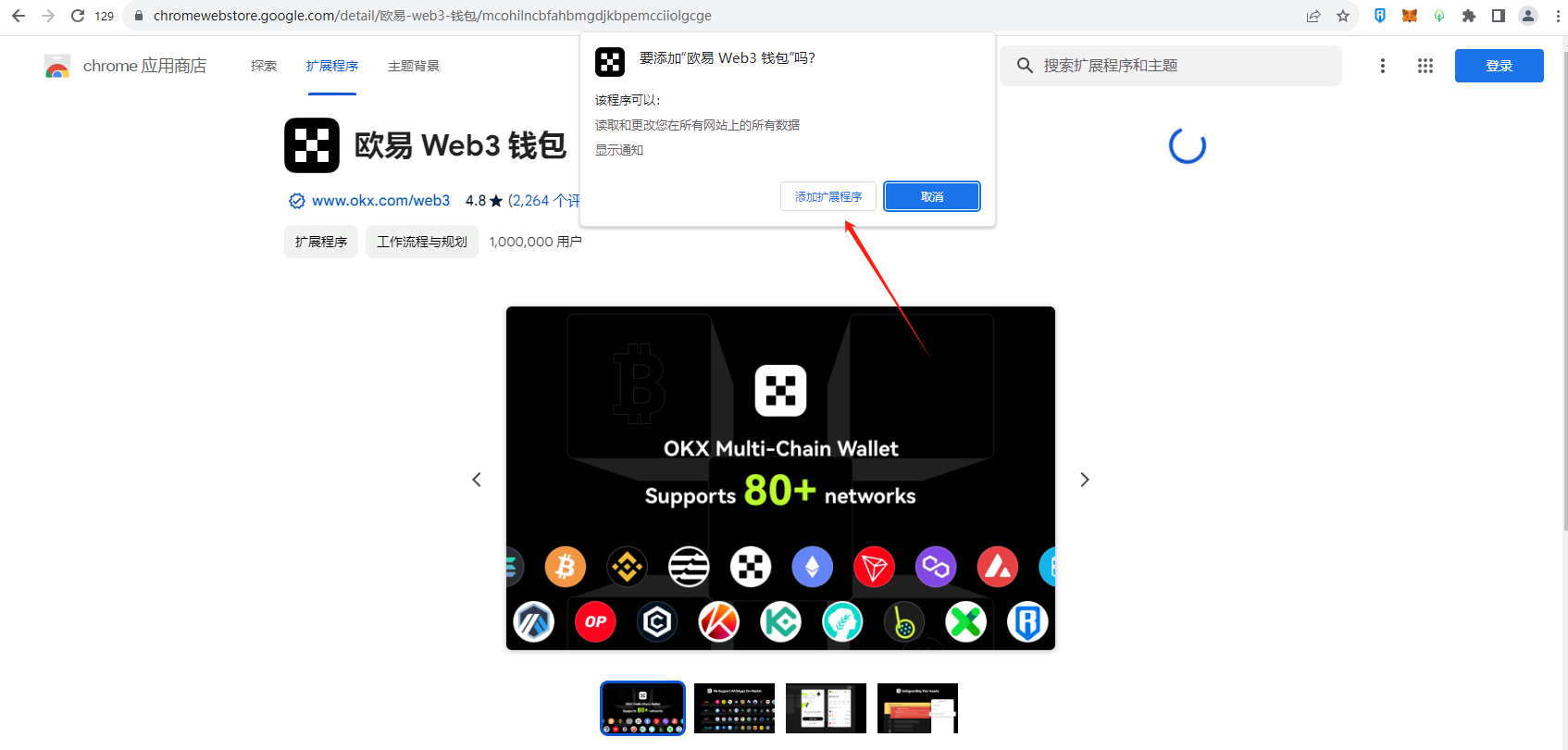
STEP 2. Create a wallet, enter the password and save the mnemonic.
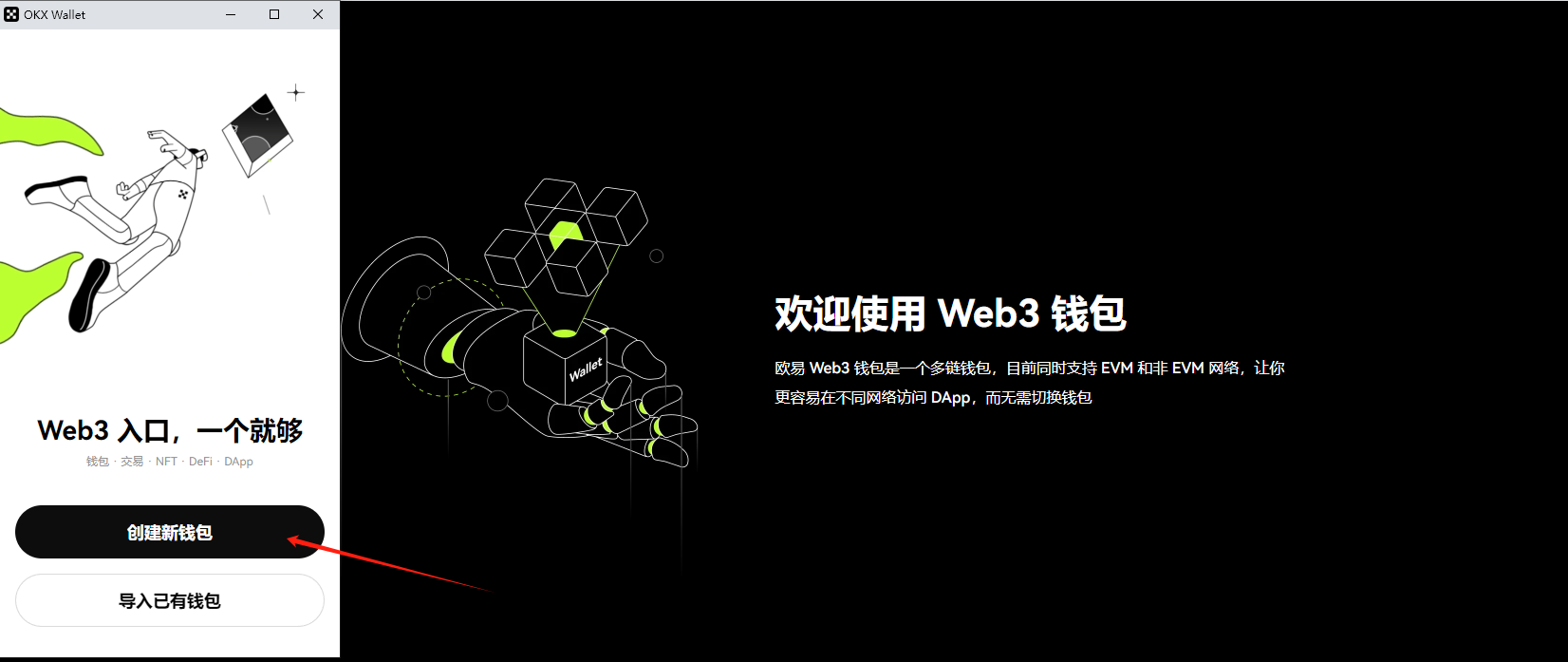
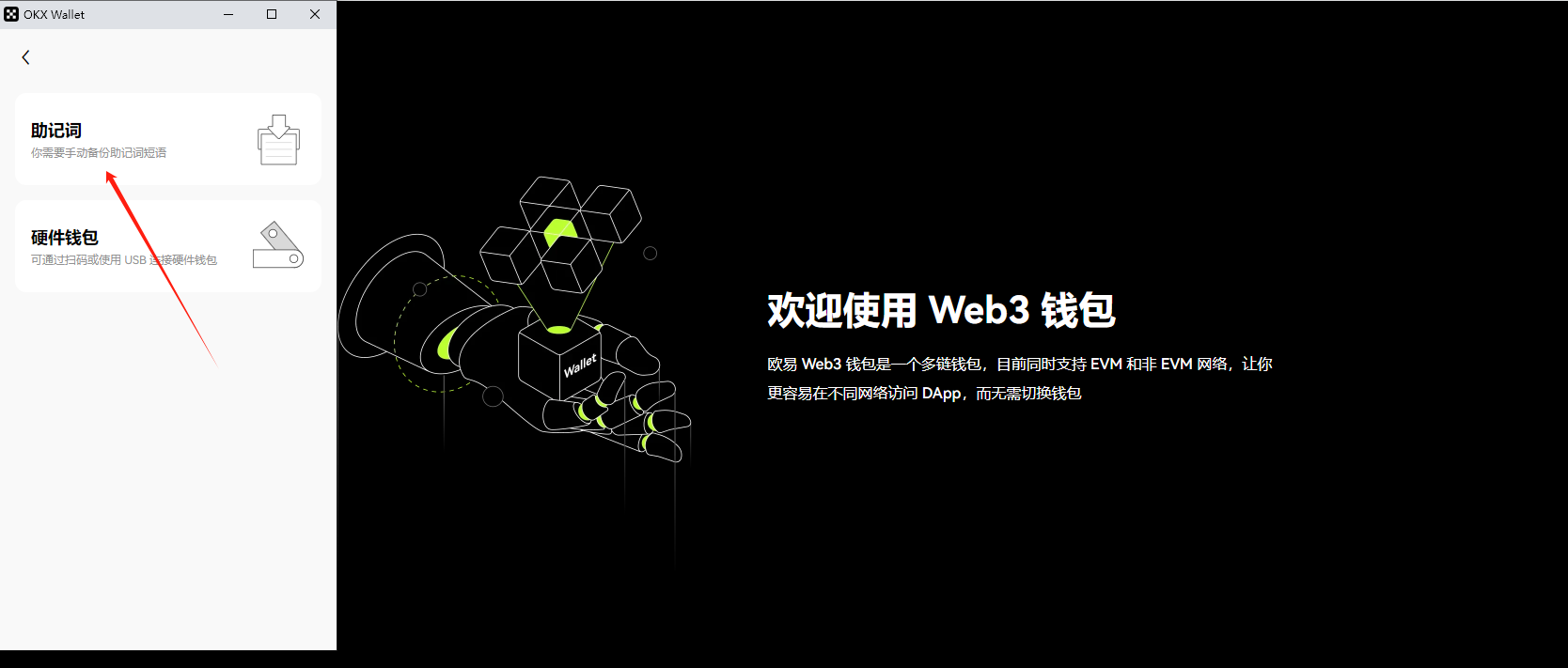
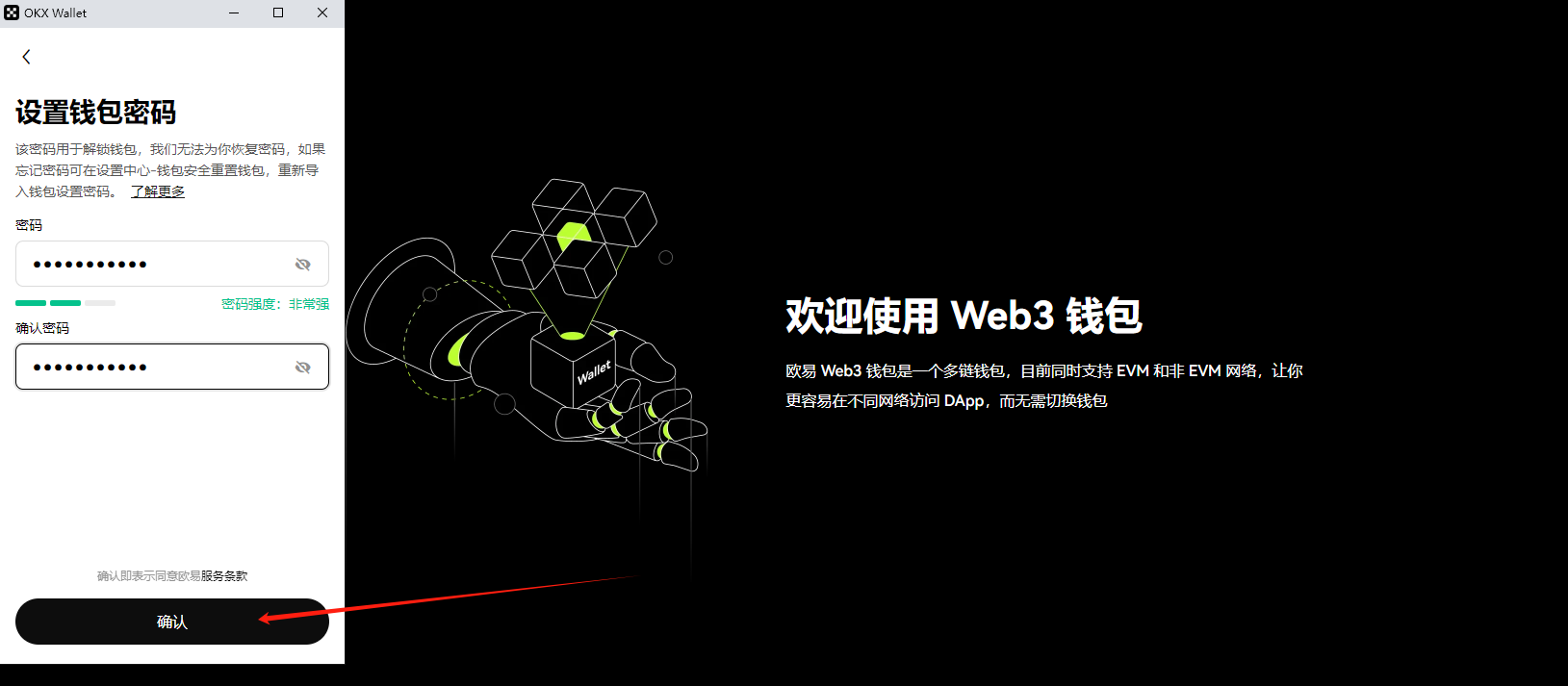
At this point, OKX Wallet is created. If you want to deposit the BTC you planted on the exchange into the newly created wallet, switch the wallet network to BTC and follow the steps below to obtain the wallet address information.



Minting and Secondary Trading
STEP 1. Enter the OKX Web 3 section ( click here to enter ) and connect your wallet.
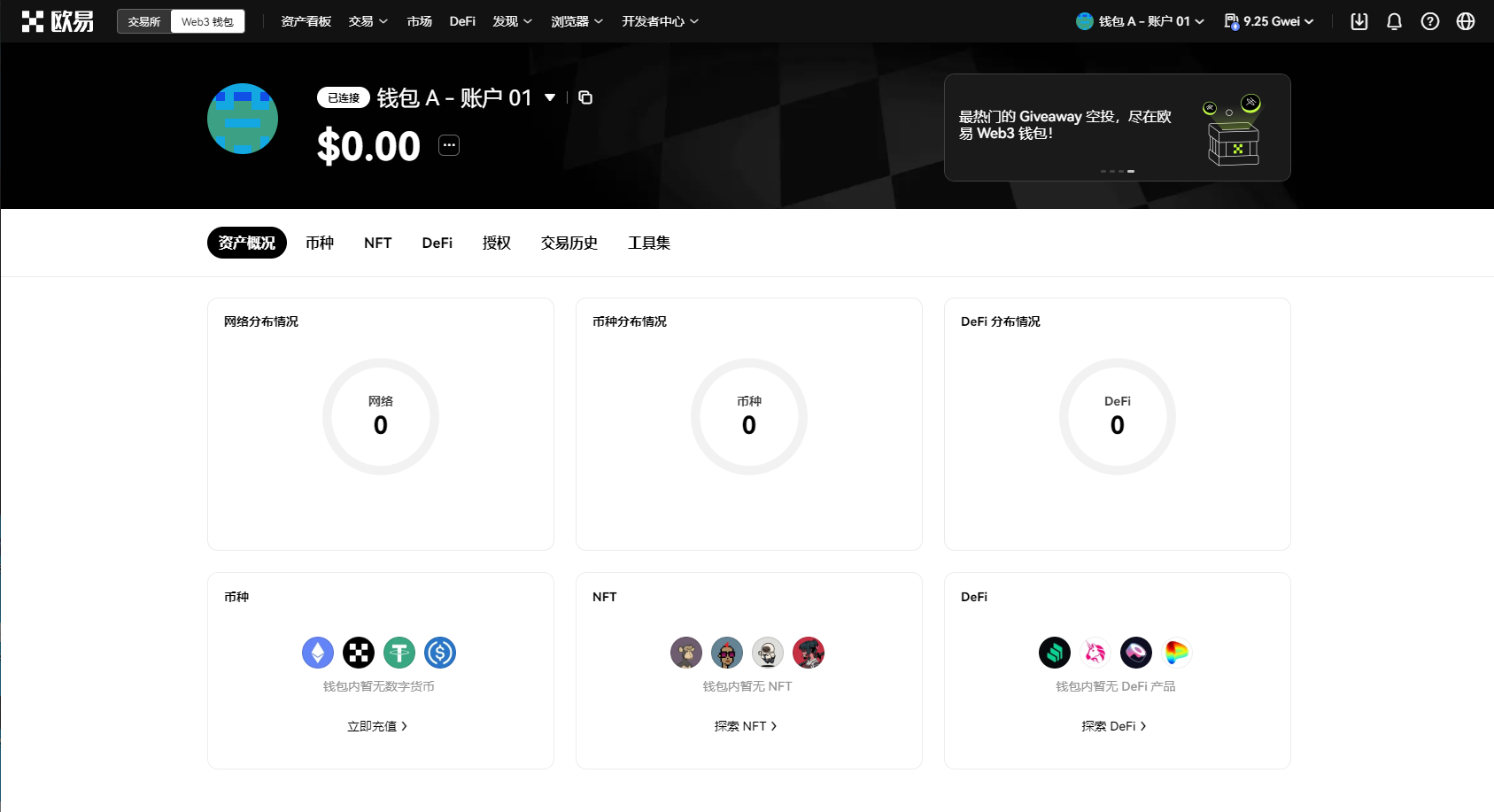
STEP 2. Select "Market" and click on the Runes section.
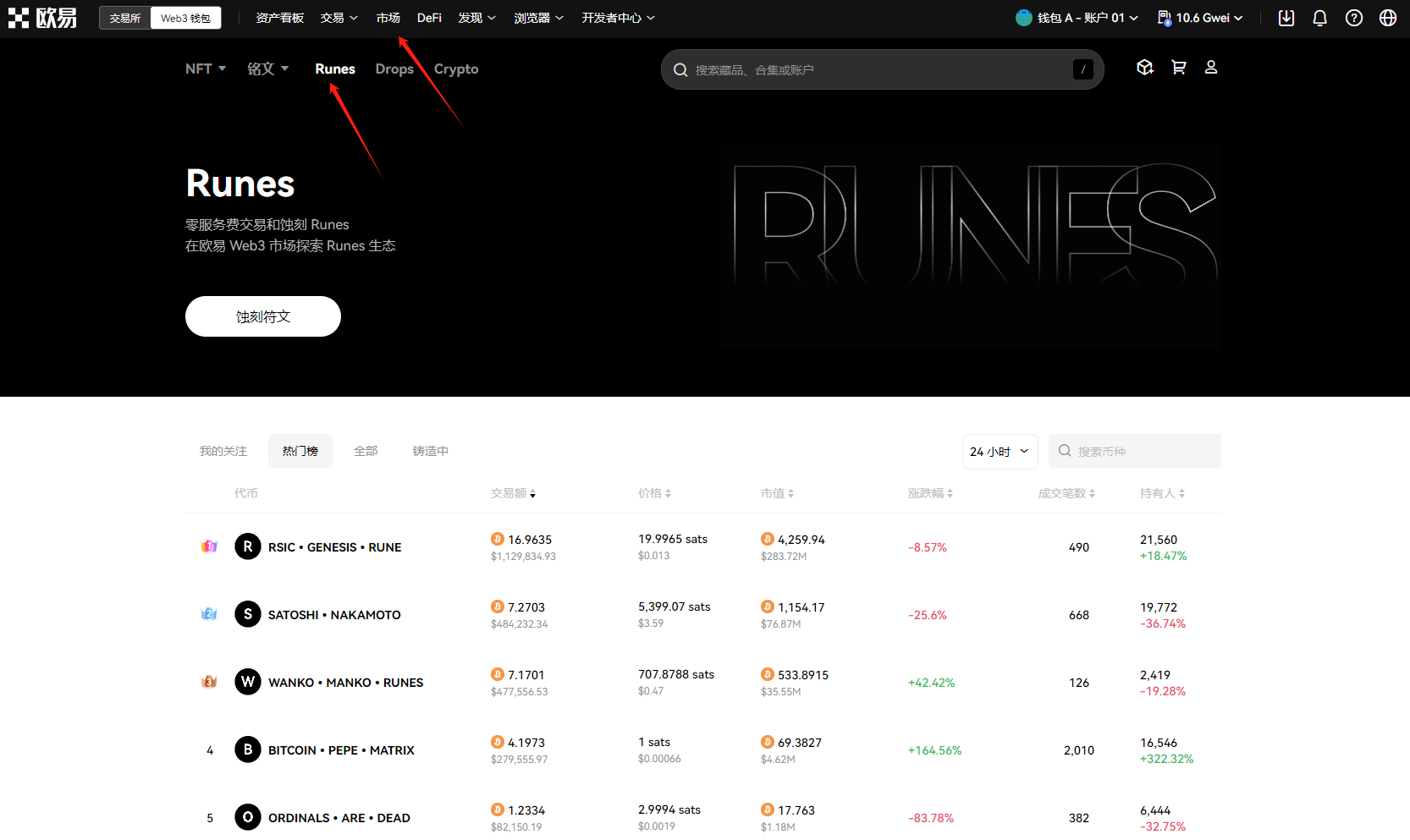
How to Cast
STEP 1. Select "Casting" and follow the prompts to start casting runes (you can also search for the runes you want to cast in the search bar).

STEP 2. Select one of the rune items. The picture below takes MEMEPOOL•SPACE as an example (for demonstration purposes only, not investment advice). Click "Cast" and select the number of repetitions.

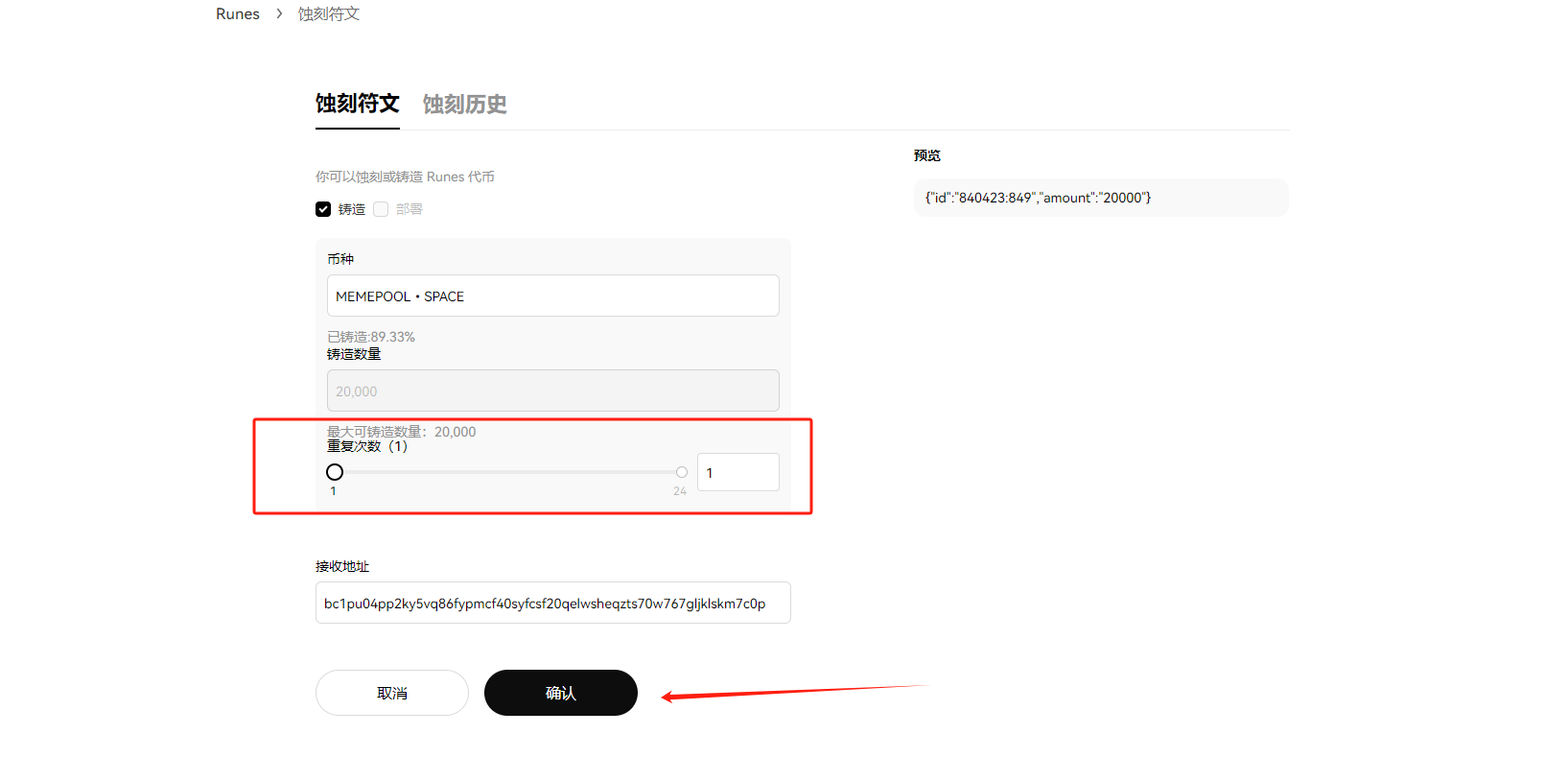
Secondary Trading
The secondary market trading of runes is similar to NFT trading, with floor prices arranged from low to high. For novice users, it should be noted that "purchasing" runes requires paying Gas to complete the chain, while "listing" orders does not require paying Gas.
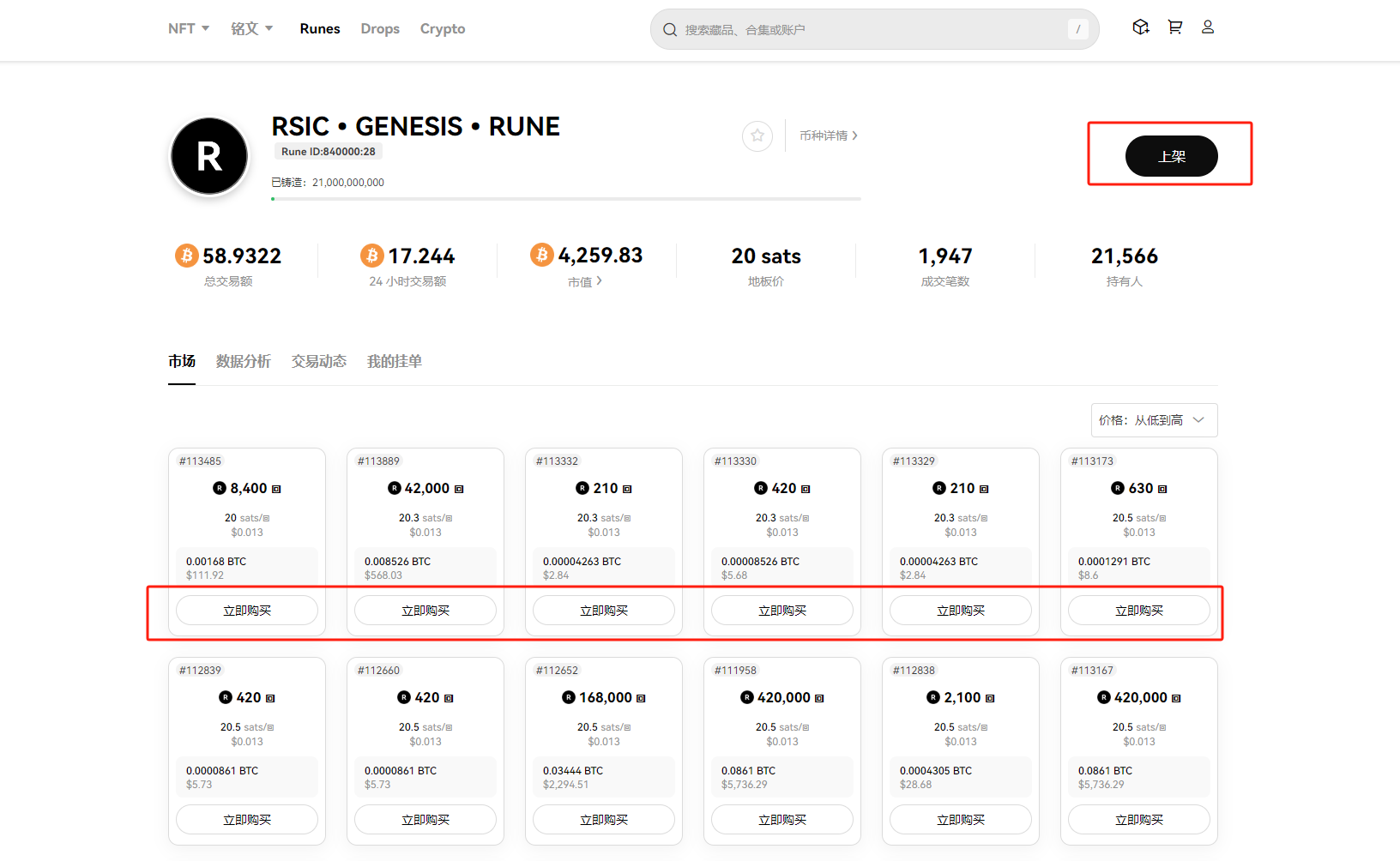
Image source: OKX Web 3 Rune Trading Market
At the same time, the OKX Web3 Rune section has a "Data Analysis" section, where you can view information such as the rune's price, transactions, and number of holders.
UniSat Wallet
Wallet creation
The operation is similar to UniSat Wallet, so the introduction is simplified.
STEP 1. Download the UniSat Wallet plugin from the Google Play Store ( click here for the download link )
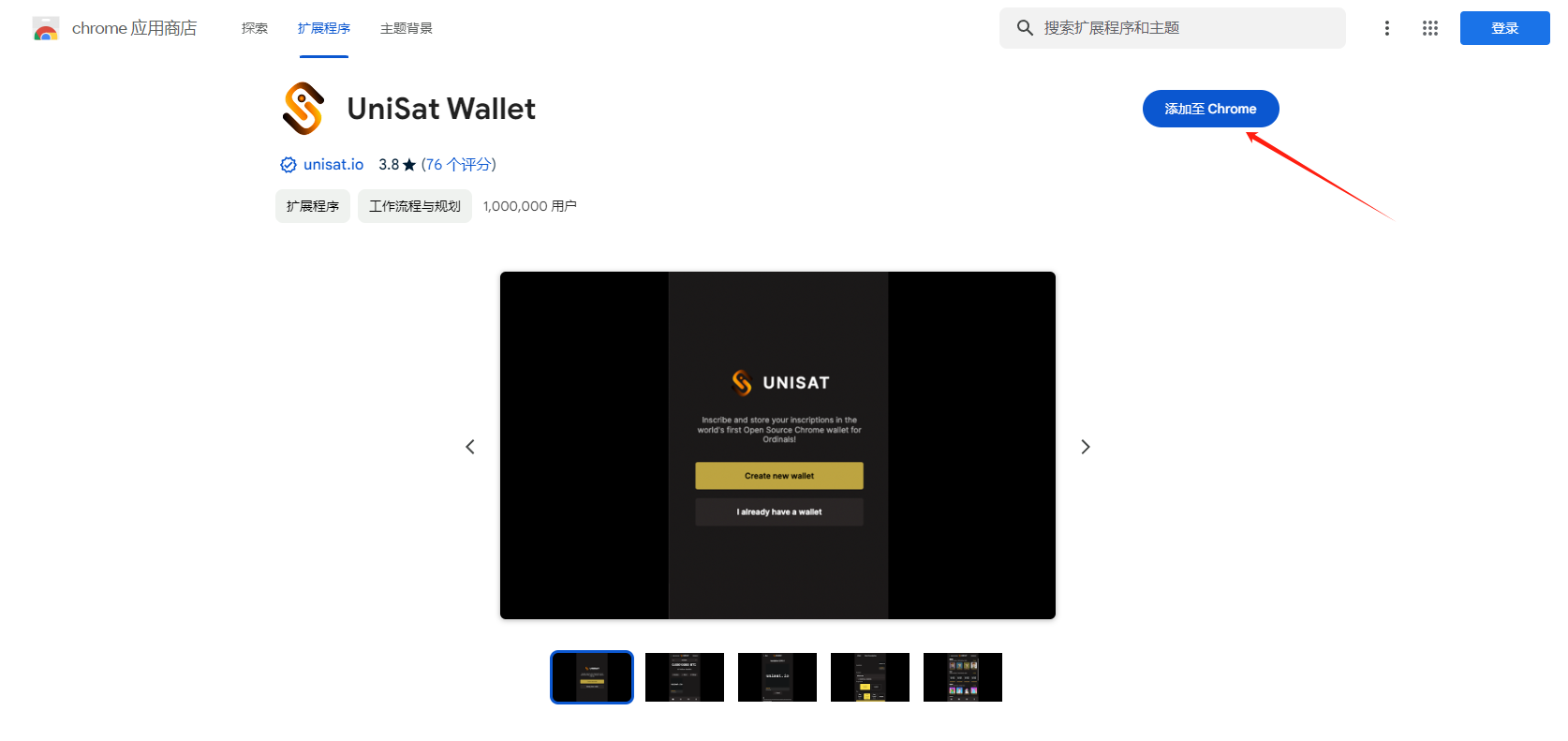
STEP 2. Create a wallet, enter the password and save the mnemonic.
Minting and Secondary Trading
Casting
STEP 1. Enter the Runes section of the Unisat official website ( click here to enter ) and connect your wallet, then select "Explorer" and choose the rune you want to cast (you can also search for the rune you want to cast in the search bar).
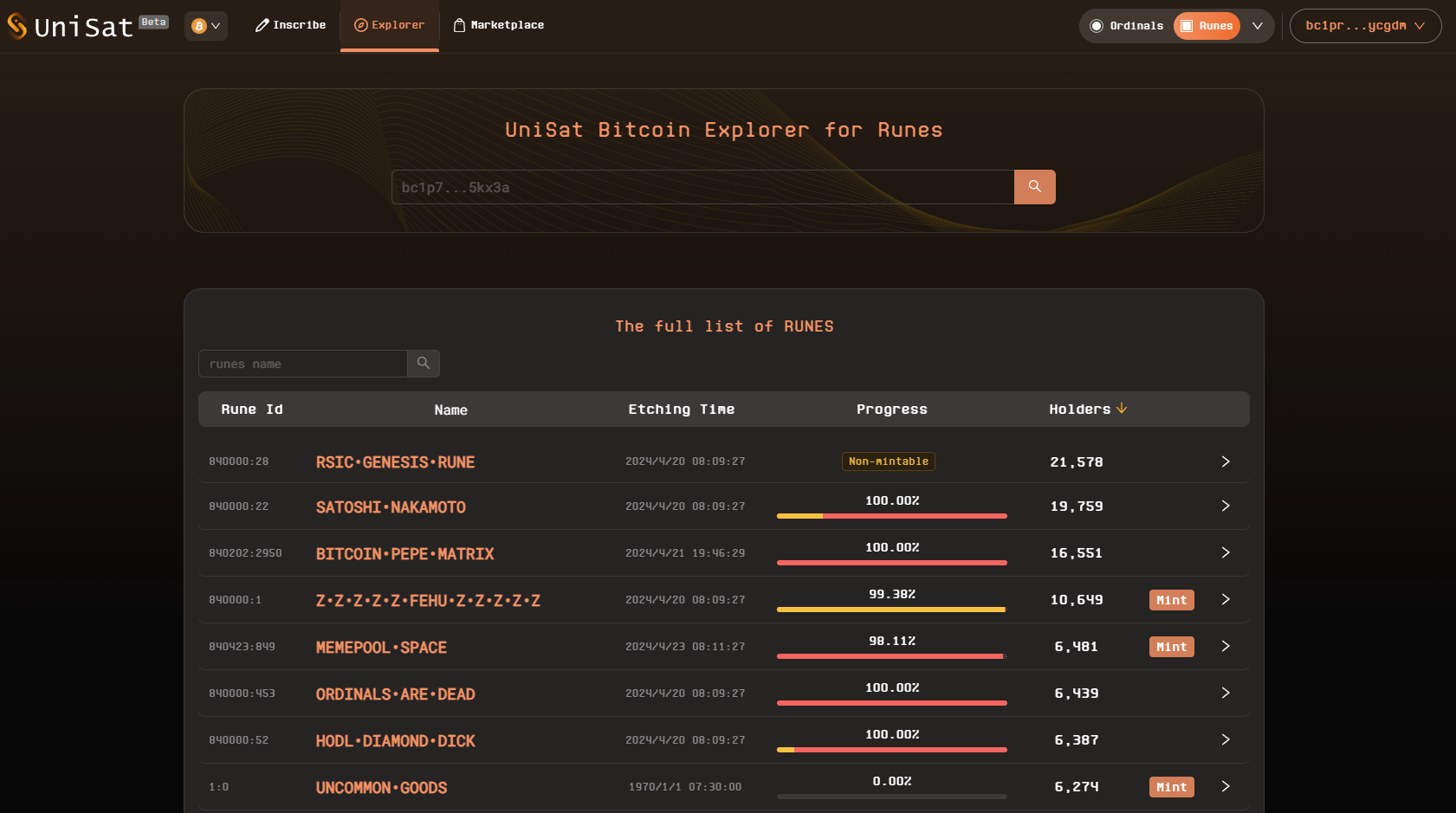
STEP 2. Select one of the rune projects. The picture below takes MEMEPOOL•SPACE as an example (for demonstration purposes only, not investment advice). Click "Mint Directly" and select the number of repetitions.
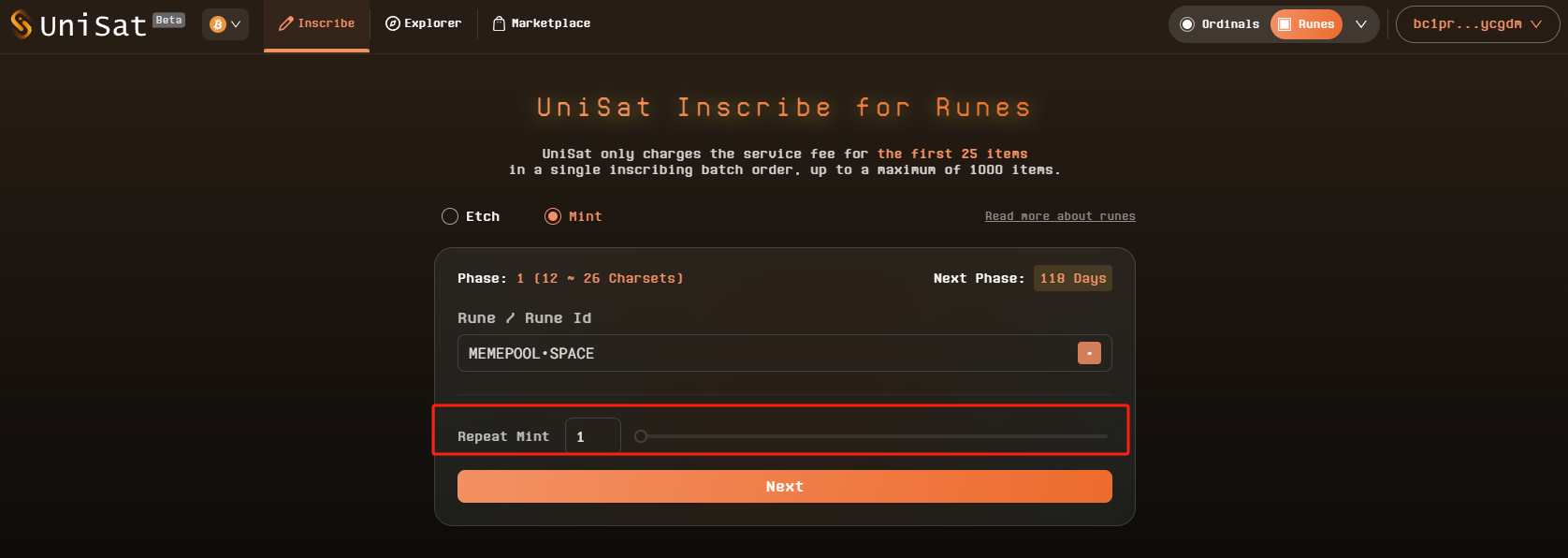
Secondary Trading
Enter the trading market section . The operation is the same as the OKX Web 3 market. Select the rune you want to buy or sell ("Buying" runes requires paying Gas to be completed on the chain, while "Listing" orders does not require paying Gas).
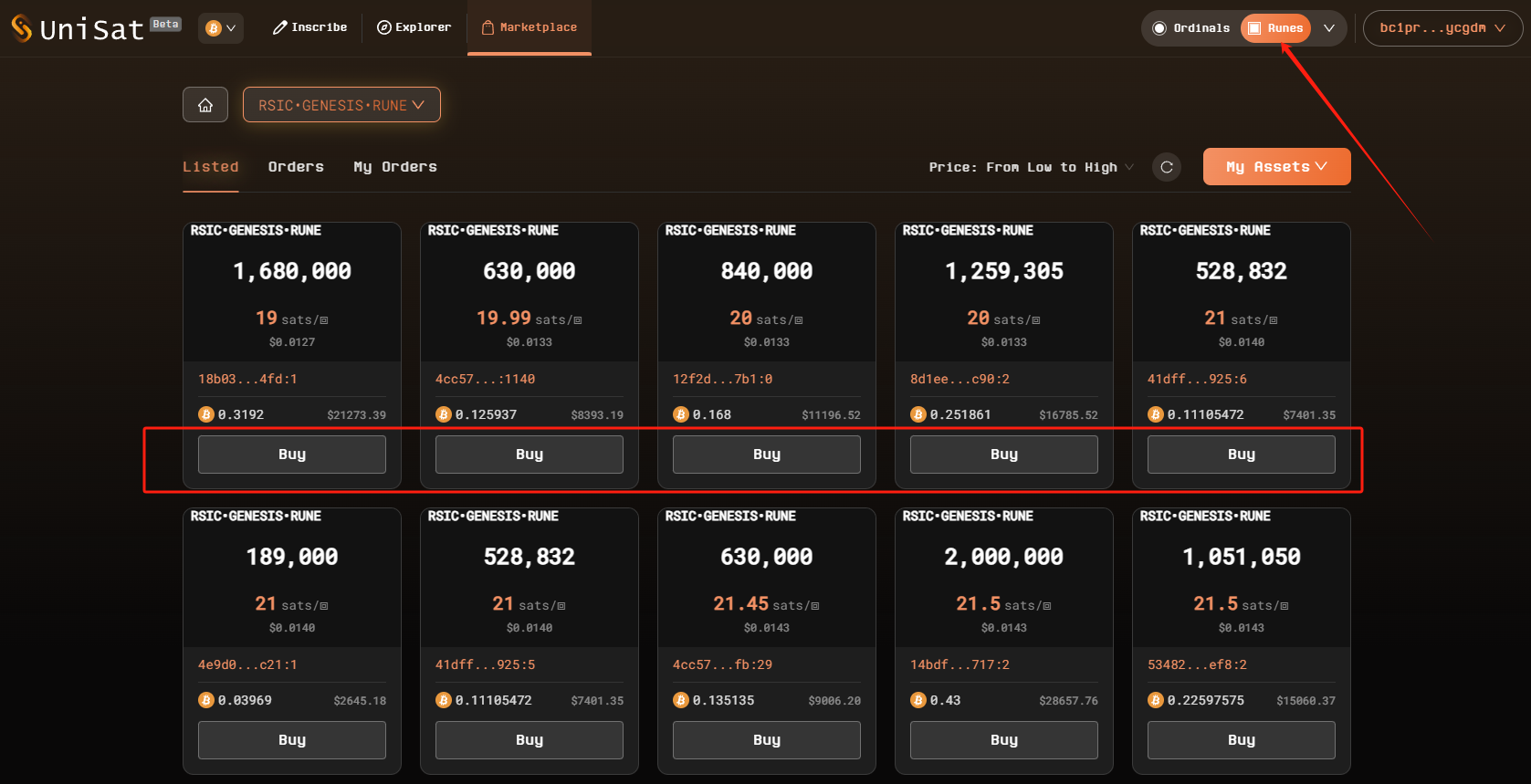
According to the above introduction, I believe that novice users can also conduct primary casting or secondary trading based on their own participation time, provided that they know the rune project. However, since the time required for the BTC network to be on-chain is much slower than that of the commonly used ETH network, how can we find transaction information? At the same time, in addition to community information, how can we find popular rune projects on-chain and participate in them as soon as possible? Below, Odaily Planet Daily introduces two BTC on-chain monitoring websites to solve these problems.
Use of on-chain monitoring tools
mempool: BTC memory pool browser
Tool link: https://mempool.space/zh/
Mempool is a must-have tool for every user participating in the primary transaction of the BTC ecosystem, with two main advantages:
On the one hand, you can check the real-time speed of the BTC network through the website, and then judge whether the current BTC network is congested. Therefore, when casting runes, in order to complete your BTC chain transactions as quickly as possible, you can set it according to the BTC network fee at that time.

Real-time Gas Fee Monitoring
On the other hand, check your wallet address and current transaction status. As shown in the figure below, the transaction is currently waiting to be uploaded to the chain, with a fee of 191 satoshis/byte and an estimated time of 9 minutes.
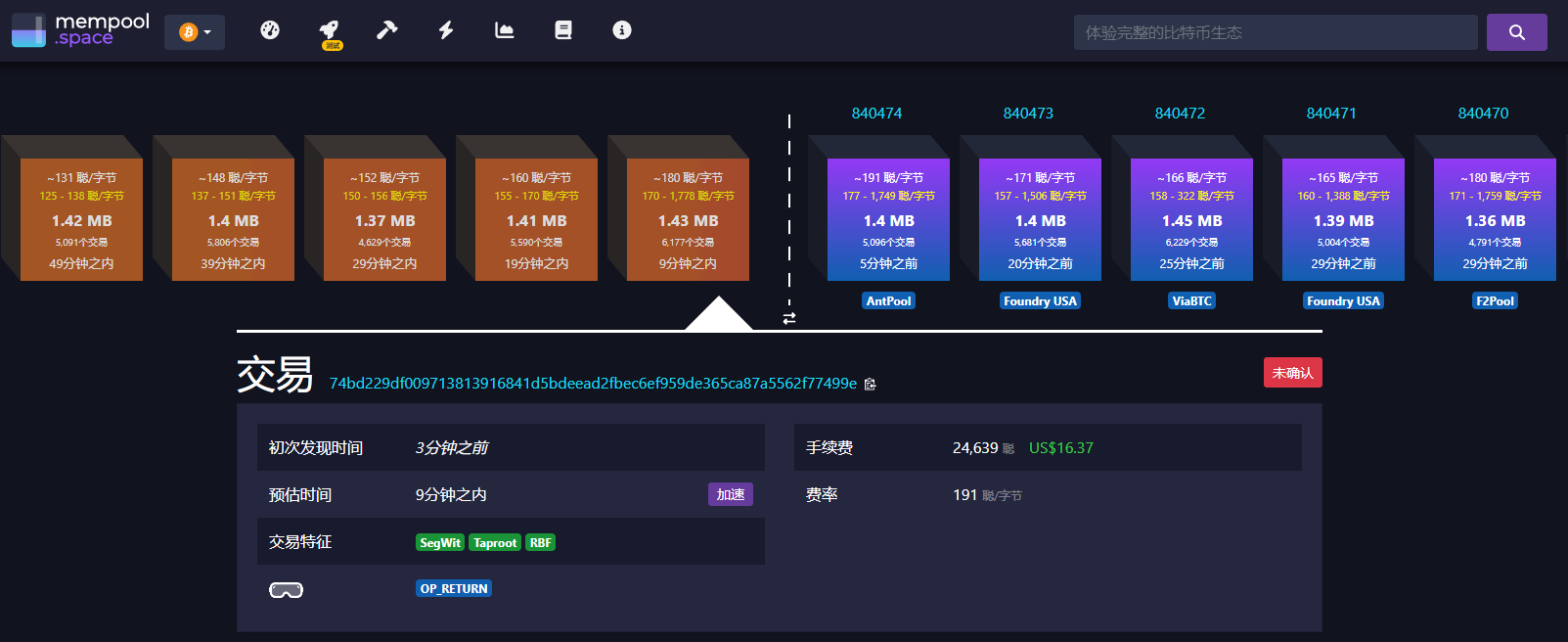
Image source: mempool
GeniiData: Finding Popular Rune Items
Tool link: https://geniidata.com/ordinals/home
GeniiData can be said to be the most commonly used tool for finding popular BRC-20 projects on the chain, with two main advantages:
On the one hand, check the current popular projects on the BTC network. The heat map of the BRC-20 sector in the figure below is familiar to everyone. When casting inscriptions, you will see that various communities are issuing them. Through this heat map, you can know what the current popular projects are. As shown in the figure below, the larger the area occupied, the more transactions related to the rune in the previous trading pool, which means that many people are buying or trading the rune.
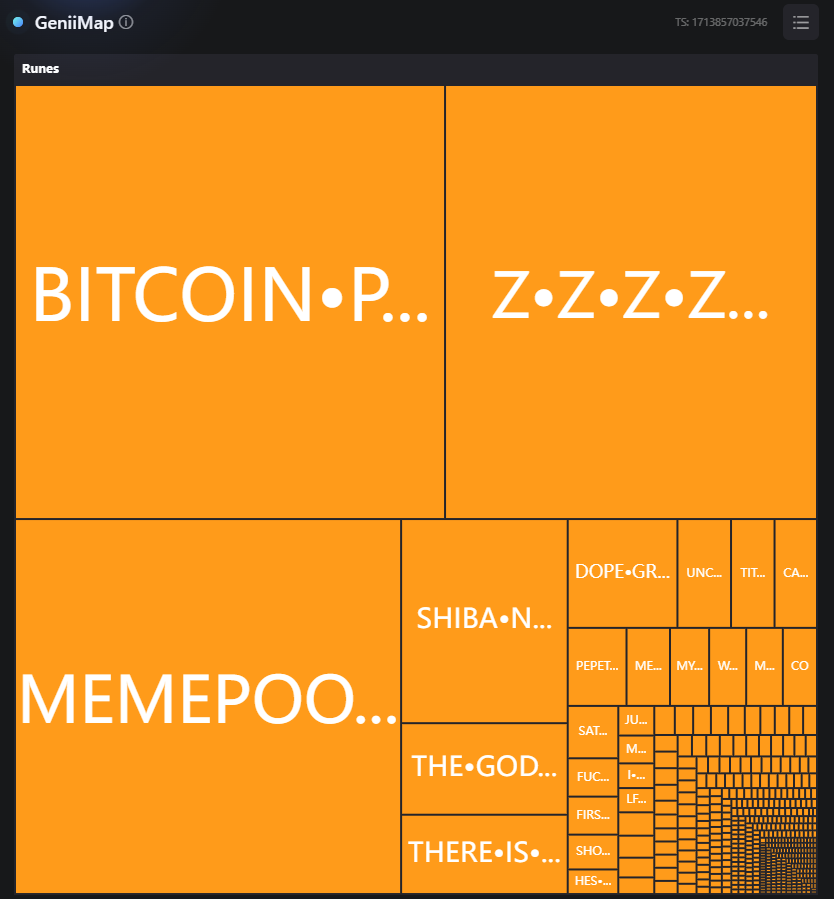
BRC-20 plate heat map
On the other hand, check the basic information of a BRC-20 project. Click the heat map to view the basic information of the corresponding project. As shown in the figure below, the minting time of the rune project Z•Z•Z•Z•Z•FEHU•Z•Z•Z•Z•Z started at 08:09:27 on April 20 (Block height is 840000), and the current minting rate is 44.24%. At the same time, in the lower half of the page, you can see the current position of the rune holder and other information.
